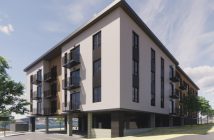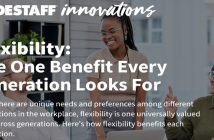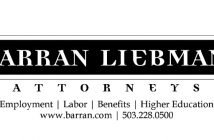
Forbes Publisher Touts Innovative Approach at EDCO Annual Event
An internationally renowned author and the publisher of Forbes magazine touted a “soft edge” approach to achieving business success through building customer trust and loyalty via the deepest expression of corporate purpose, during a keynote address to the Economic Development for Central Oregon (EDCO) 2014 annual luncheon.
Rich Karlgaard shared his perceptive insights with a packed house of attendees at Bend’s Riverhouse Convention Center, maintaining that companies that triangulate beyond executional excellence (the “hard edge”) and strategic competency are better able to survive a disaster, a major industry disruption or an economic recession.
The widely-respected commentator, who is deeply engaged in forums that explore business transformation, as well as being an entrepreneur and angel investor, said, “Soft-edge attributes such as trust, teamwork, taste and story lead to greater brand recognition, higher profit margins, higher stock multiples, more loyal customers and more committed employees.”
The landing of the much in-demand public speaker for its yearly conference was something of a coup for EDCO. Karlgaard was named publisher of Forbes magazine in 1998, and his first book: Life 2.0: How People Across America Are Transforming Their Lives by Finding the Where of Their Happiness (2004) reached the Wall Street Journal business bestseller list.
During the EDCO event he touched on themes contained in his latest book: The Soft Edge: Where Great Companies Find Lasting Success due for release this month, which expands on Karlgaard’s focus on the fundamentals of business, the need for constant innovation and the importance of building the right corporate culture.
Traditionally businesses have prioritized the hard edges of strategy – including having a good grasp of respective industry markets – and execution – including efficiency of operations and with capital. But he opined that was no longer sufficient to navigate severe economic fluctuations.
Today’s fully rounded businesses need a “soft edge” incorporating a “deep expression of their cultural values, purpose and aspirations.”
Karlgaard added, “The soft edge is often disregarded by hard edge companies as it is harder to measure and your return on investment isn’t as clear, but it creates extreme employee and customer loyalty.”
A couple of years ago, he dwelt on the question of why some companies enjoy sustained success while others fell by the wayside – brought into timely focus by Apple hitting an all-time market capitalization record at the same time the once venerated Eastman Kodak company declared bankruptcy.
He speculated that Kodak, which in the mid-20th Century was something akin to Apple as an industry leader in consumer gadgets and led the development of photography’s modern popularity, was undone by lack of adaptation to change and inability to innovate in the face of the digital revolution.
In regards to the current trend of steady but cautiously restrained post-recessionary growth in Gross Domestic Product (GDP), Karlgaard said that 70 percent of Americans still believe we are in a recession even though that period technically ended in June 2009, because the recovery is “not widely distributed.”
He added, “This is the most uneven economy we have seen. Careers can be stuck and the recovery seems to be playing out tied to particular industries and geography.
“You see striking examples like the oil boom in North Dakota driven by ‘fracking’ technology, where unskilled labor can earn $80-100 an hour, while, for example, Detroit is still mired in the economic doldrums. Fracking is actually not new, but the innovation and advancements in horizontal drilling is.
“Also, Silicon Valley continues to thrive, while 50 miles away Stockton, California, never recovered.”
On the local level, Karlgaard said he has actually visited Central Oregon multiple times, having “fallen in love with the place” after his first interaction with the region during a vacation in 1984, adding that for its biggest City, in a business sense, “Bend’s friend is the mobility of the new generation that wants to meld with an attractive lifestyle.”
He also urged patience in building on Bend’s undoubted attributes and its attention to the “value in making things” showcasing the increasing importance of applying technology to solve real world problems.
Karlgaard said the region was “on the right track” with the planned Oregon State University-Cascades campus feeding the growth of business as part of the developing supportive ecosystem, including access to venture capital. He added, “You can figure out who your models are and with key components in place like air service access, there is nothing to stop you!”
Earlier in the event, EDCO Executive Director Roger Lee shared updates on the organization’s key projects over the last year which had helped “build an even better foundation for business growth,” including securing the return of direct flights to Los Angeles via the community’s overwhelming and rapid response to a “Travel Bank” call, realization of EDCO’s local-regional vision, advancement of the Unmanned Aerial Systems (UAS) initiative and the collaborative pushing forward of the OSU-Cascades four-year school vision.
He added, “While not job creation per se, these focused efforts set the table for job creation and economic diversification.
“Some take years to realize, others must be executed in a matter of weeks. But all leverage the work and resources of our relatively small organization to ‘move the needle’ for our economy.”
He looked back to EDCO’s inception in 1981, when it was established to help rebuild the regional economy in the tri-county area. Some 22 years later, it experimented with also providing local economic development services via a partnership in Redmond (Redmond Economic Development Inc., or REDI).
Lee observed, “Years later, EDCO established similar efforts in Crook County followed by Jefferson County and Bend.
“With the launch of new local programs in La Pine and Sisters in 2013, all areas within Central Oregon are now represented by local EDCO managers and advisory boards that are supported by a strong regional organization.
“It is one of the only economic development models of its kind in the western United States. But more importantly, it realizes a vision of the EDCO Board to have outstanding professional capacity at both the community and regional level throughout our diverse region.”
REDI Manager Jon Stark took the podium to explain how EDCO had invested time over the last year figuring out how to best communicate what the organization was about and how to illustrate its framework.
He said, “We distilled it to just three key words, ‘Move…Start…Grow’.
“As you might imagine, move is helping companies relocate their operations to Central Oregon, start means assisting early stage companies and entrepreneurs launch companies from the ground up (these could be startups that just moved to the region or they could be home-grown entrepreneurs) and grow is about helping existing Central Oregon companies expand – expand their operations, their sales footprint and their workforce.
“Last year, seven new companies moved into and/or established operations in the region. They represent a broad range of industries from financial services to software, high tech, food processing and advanced manufacturing. These new companies have already created 164 new, well-paying jobs.
“Some 41 scalable companies also gained traction within EDCO’s entrepreneurial efforts. Last year, EDCO met with, consulted and referred to our partners more than 200 startups—a real testament to our developing ecosystem.
“Nationally, we’ve gained some recognition for momentum as an entrepreneurial area. EDCO is really excited to serve as a ‘force multiplier’—helping architect and strengthen our entrepreneurial ecosystem. We strive to be the ‘connective glue’ for the ecosystem, helping startups make the right connections.
“Also, in terms of growth, nearly 600 jobs were created or retained by the companies we work with last year.
“These companies are already established in the region and they added tens of millions in new payroll that support hundreds of households and purchases of homes, cars, groceries, lift tickets, health care—and just about everything else that makes up our local economy!
“EDCO helps big companies and small companies. We also help companies across a wide variety of traded sector industry segments.”
Results exceeded goals for EDCO across the board in 2013, with the group playing a key role in helping 34 companies create or retain 803 new jobs. The companies assisted invested over $225 million in Central Oregon in taxable property, adding nearly $33 million in new payroll last year.
As far as 2014 is concerned, Stark said already 15 companies have agreed to go public about their intention to move or grow.
He added, “This does not include companies that have already made decisions and are either in planning or construction phases. But you can see how we have a number of exciting projects in our pipeline!”
Economic Development for Central Oregon (EDCO) is a private non-profit organization dedicated to diversifying the regional economy by recruiting new companies and helping traded-sector firms already in Central Oregon expand. www.edcoinfo.com; tel. 541-388-3236.





